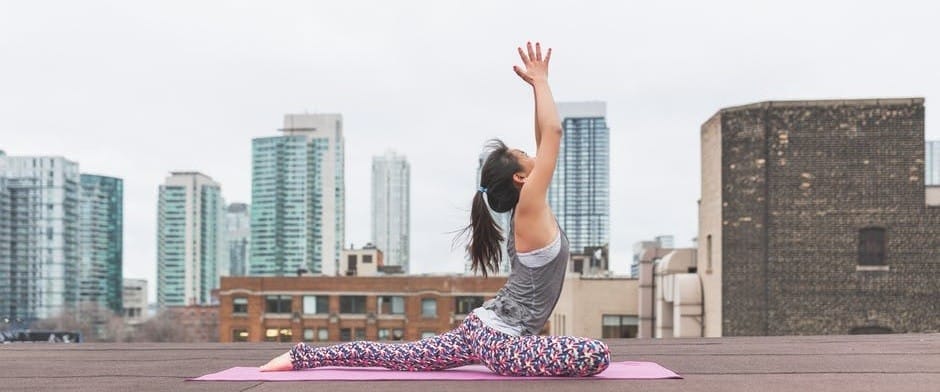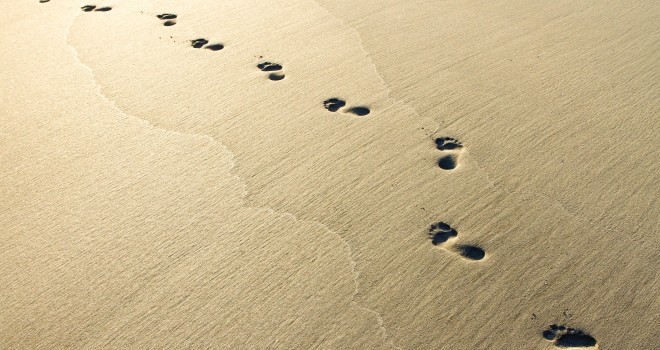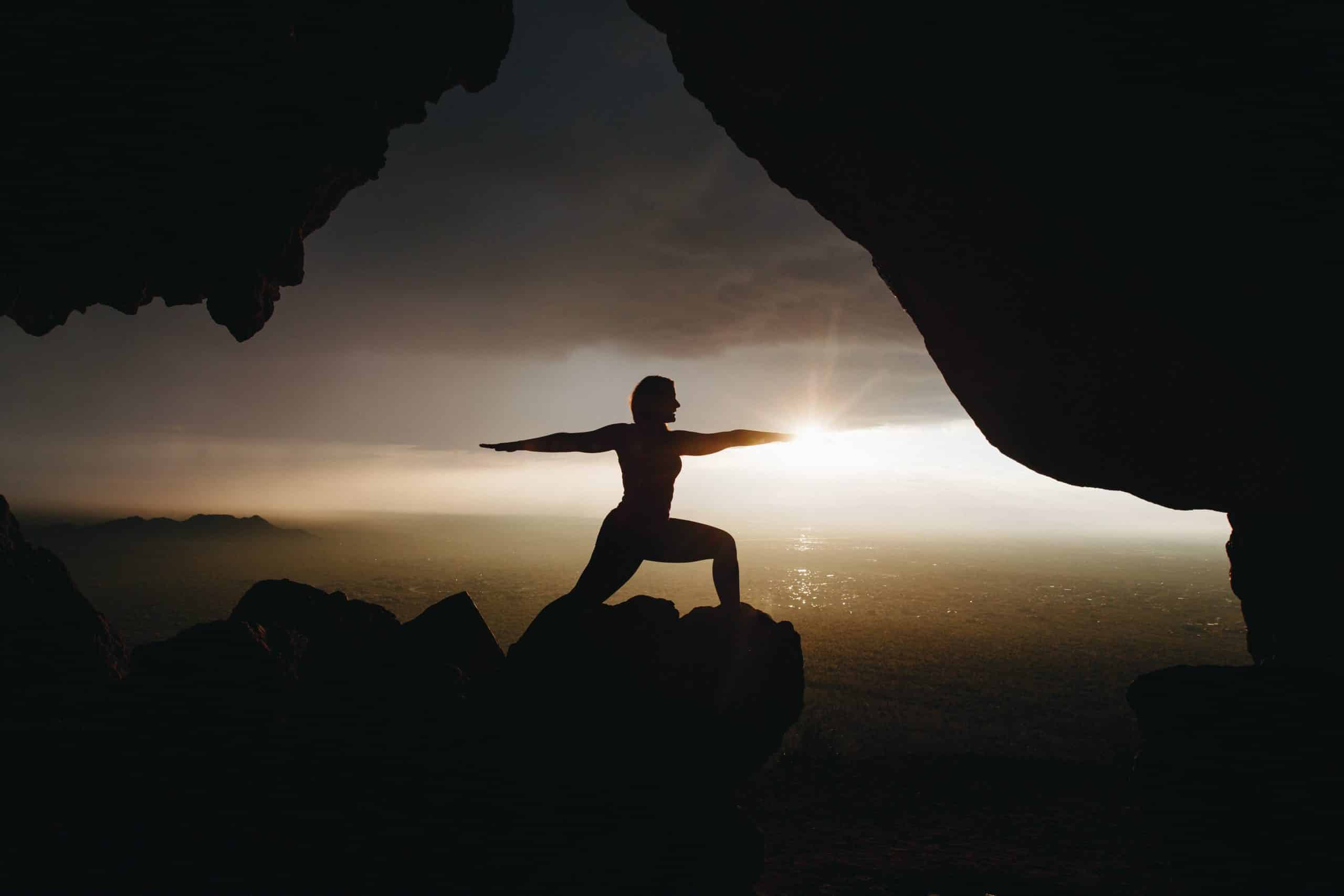“Vinyasa krama” is a specific way or practising the art of yoga. In this ancient system (yoga korunta), poses are practised in a “sequenced” manner as series. Each of these sequences of postures are accomplished with conscious breathing “ujjayi” (breath controlled at the level of the throat and diaphragm).
The importance of breath
The focus is inherently part of the process by following carefully the rhythm of inhale and exhale during the sequence of poses, breath is thus a sort of “harness” which links the mind to the body. At first we focus on breath through a light contraction of the glottis in ujjayi, then in the higher levels of practice we become aware of “pranashtana”, the centre from whence the breath comes and go…
The focus of breath, along with deep breathing and a rhythmic sequence of poses make of this yoga style a particularly interesting system. The use of breath along the achievement of poses is particular to “vinyasa krama” and based on the instructions of the wise Patanjali in his “yoga sutras”. There are currently many hundreds of “vinyasas” (different sequences) of which about ten of them are currently in fashion.
Typically, one doesn’t hold their breath in the practice of vinyasa, quite the opposite, they take on a deep controlled breathing (ujjayi), with the help of bandhas (seals). There are however some exceptions such as the “surya namaskar” (sun salutation) where they use “mantras” (phrase) in poses and where they hold their breath during the chant of theses “mantras”. This breath management is considered during the sequence of poses to be an excellent preparation to the study of pranayama.
The many nuances of vinyasa
Like many Sanskrit words, vinyasa has several meanings. Yoga classes that emphasize flowing movements can be described as vinyasa. Yoga teachers may say, “Take a vinyasa.” Yoga masters may lecture about vinyasa krama. And just today I heard a fellow yoga student ask our yoga teacher, “What is the difference between ashtanga and vinyasa?” In order to understand vinyasa, let’s take a look at its variations in meaning.
There are four basic definitions of vinyasa: 1) the linking of body movement with breath; 2) a specific sequence of breath-synchronized movements used to transition between sustained postures; 3) setting an intention for one’s personal yoga practice and taking the necessary steps toward reaching that goal; and 4) a type of yoga class.
1. Breath-synchronized movement
The word vinyasa can be broken down into its Sanskrit roots to assist us in finding its meaning.
Nyasa means “to place” and vi means “in a special way.”
One common interpretation of vinyasa then is a breath-synchronized movement; breath and movement are seamlessly united in such a way that each action encourages the other. For each movement, there is a corresponding breath. For example, in the following sequence there are three vinyasas (three breaths/three movements): Exhale into chaturunga dandasana (four-limbed staff pose), inhale into upward-facing dog, exhale into downward-facing dog.
Typically, inhalations are linked to upward movements and motions intended to expand the front of the body and create lightness. Exhalations are tied to movements that either compress the belly, as in forward bends and twists, or ground and stabilize us with downward flowing energy. For example, at the beginning of a sun salutation we inhale as we raise our arms to the sky and exhale as we fold forward toward the earth.
According to the ashtanga tradition, the purpose of linking the breath with movement (vinyasa) is internal cleansing. Vinyasa generates the subtle, internal heat of transformation and stokes agni fire. Agni is the digestive fire used not only to digest physical food but also experiences and sensations. If our fire is strong, we can better adapt to life’s challenges.
The breath used in vinyasa, ujjayi pranayama, creates a vibration across the soft palate of the mouth, warming the breath as it enters the body. The sweat that develops from the practice helps to remove impurities.
2. Take a vinyasa
“Take a vinyasa” is a commonly used phrase to indicate a specific sequence of vinyasas (each breath/movement corresponds to one vinyasa) practiced as a linking mechanism to enter, exit or join postures. The choice of movements typically consists of counterposes that help balance the effects of asanas and clear energy channels. The linking vinyasas bring the body back to neutral so that one can fully feel the energetic effects of the practice. Chicago yoga teacher Paul Weitz states, “When you go through vinyasa you recalibrate the spine, shoulders and hips. You are also learning how to control the breath while moving through space and learning how breath initiates movement. Vinyasa creates a rhythm of respiration that you continue to feel while holding a pose or in meditation.” In addition to the vinyasas derived from ashtanga, Paul recommends dandasana (staff pose) and navasana (boat pose) as excellent poses to clear out the energetic effects of a previous posture or sequence.
While many of the more commonly used vinyasa sequences are based on sun salutations, there are countless other options available.
3. Vinyasa krama
Krama is the “steps” one takes “to place in a special way.” It is the intelligent sequencing of a personal yoga practice designed with a specific intention or goal. While almost all yoga practices involve vinyasa krama, it is especially emphasized in the teachings of T.K.V Desikachar (viniyoga).
We begin our practice with anapana –observing where we are, then determining what we want our yoga practice to accomplish. After determining our intention, we develop an intelligent sequence of asana, pranayama, meditation or another aspect of yoga that will help lead us toward our goal. We may have an immediate goal such as needing to relax, achieving a specific posture or preparing for meditation. Or we may have a long-term goal such as conditioning our body or learning how to focus and concentrate.
The concept of vinyasa krama can also be applied to our everyday life, whether it is as simple as deciding what to make for dinner or as daunting as deciding on a new career–and then taking the necessary steps toward achieving that goal.
4. Vinyasa flow yoga classes
Vinyasa flow has become a popular way of practicing yoga for Westerners attracted to the creative, fluid and physically challenging nature of the practice. The style was developed fairly recently, and Los Angeles Bryan Kest was among the originators. In 1989, after studying ashtanga yoga in India with Sri Pattabhi Jois for a year, Bryan returned to Los Angeles and, “confident in his own intuition,” began to deviate from the predetermined ashtanga sequencing of postures. Bryan called his style “Power Yoga.” Today, well-known vinyasa flow teachers, each with his or her own unique variation, include Shiva Rae, Erich Schiffmann, Baron Baptiste and Seane Corn. Classes described as vinyasa flow synchronize the breath with a flowing sequence of postures and typically use transitional vinyasa sequences between sustained postures as well. Vinyasa flow often includes components derived from ashtanga yoga such as sun salutations, ujjayi pranayama, bandhas (constrictions of specific muscles and organs to contain energy) and drishti (gaze), yet there are no predetermined asana sequences. Vinyasa flow teachers compose their classes in ways that connect poses with breath-synchronized movements. Asanas, vinyasa and pranayama are creatively sequenced to develop internal awareness, build heat and explore energizing effects. Many teachers include music to enhance the flow and rhythm of the class.
Typically, vinyasa krama is integrated into vinyasa flow classes. The teacher develops an intelligent class sequence with a specific intention, such as focusing on backbends, working with a specific chakra or creating a certain energetic effect.
Vinyasa is a tool used in many styles of yoga beyond vinyasa flow. Ashtanga, power yoga, jivamukti, viniyoga, universal and Iyengar each incorporate vinyasa into their practice. According to jivamukti yoga, “The breath is the outer vinyasa, or connecting element; the intention is the inner vinyasa.” In all styles of yoga incorporating vinyasa, there is a conscious awareness of moving the breath with the body.
Ujjayi pranayama (victory breath) is the breathing method used during the flow of asanas in vinyasa classes. A whispering “haaahhh” sound is made by contracting the glottis in the back of the throat and breathing through the nostrils with closed lips. Vinyasa flow classes may also include other forms of pranayama, but ujjayi is the continuous rhythmic breath that builds heat and provides a mantra of ocean sound to enhance the fluid nature of the practice. The ujjayi breath should be long and deep; this stretching of the breath serves to calm the mind. Yoga practices incorporating ujjayi are often referred to as moving meditations, because the continuous awareness of the breath helps develop focus and concentration and draws us deeper into our internal sensations.
Incorporating vinyasa into your practice
Depending upon your intention, vinyasa may be used to create heat, link asanas, neutralize energetic effects or create psychic energetic effects. Vinyasa also can provide an intelligent system for practice. I find vinyasa to be a powerful tool for developing internal awareness, as the focus on linking breath to movement draws my attention inward during asana practice. In a pose, rather than worrying about what the external physical form looks like, I turn my focus to the nature of my breath. My internal voice asks, “Is my breath calm? Is it smooth? Can I stretch it longer?” These questions encourage me to ease deeper into the pose; rather than focusing on muscular effort, I allow my breath to move my body.




